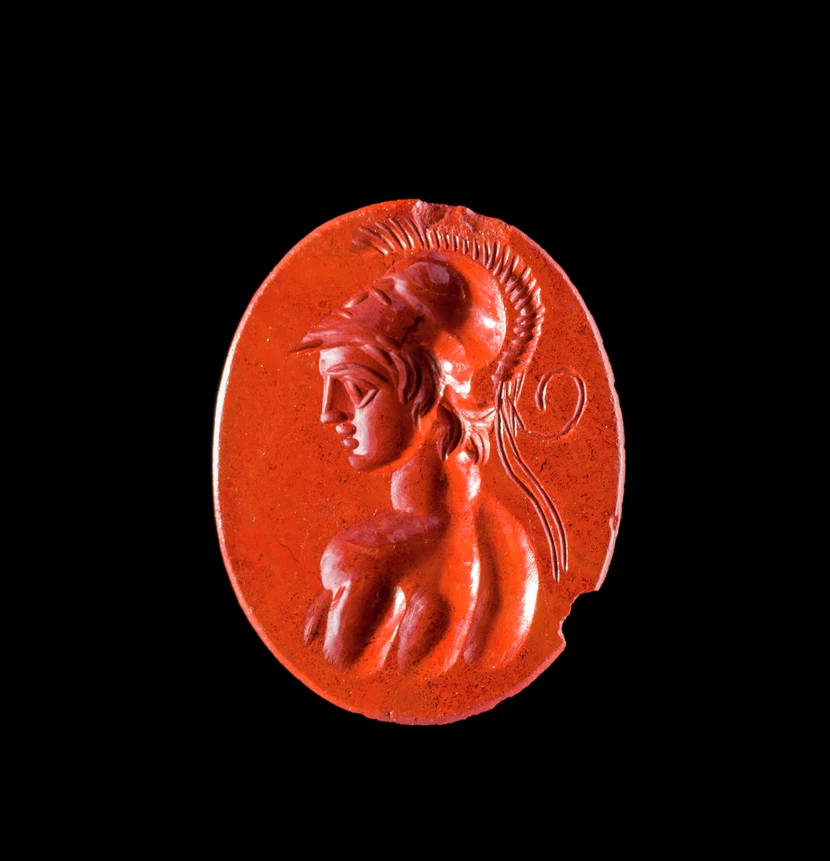The Romans
During their conquest of Britain the Roman army came up against the formidable opposition of the tribes in Wales. Fighting was often bitter, and it was not until AD 78 that the whole of Wales was occupied. Wales was subjected to tight military control by means of a network of forts garrisoned by auxiliary units under the command of two legions, based at Caerleon and Chester. The internationally important collections from the legionary fortress at Caerleon , the base of the Second Augustan Legion, and its predecessor at nearby Usk , are housed at the National Roman Legion Museum in Caerleon.
The legions required huge quantities of resources, and the works depot at Holt supplied the Twentieth Legion at Chester with pottery as well as tiles and bricks for building. Large collections of finds from several auxiliary forts - including Brecon, Caernarfon (Segontium), Caersws, Gelligaer, Loughor, Pen Llystyn - are also in our collections.
In Roman times, the metals of Wales were heavily exploited. Wales contained the richest deposits of gold, at Dolaucothi, and some of it was used locally for jewellery. Silver bearing lead existed in substantial amounts in north-east Wales, while copper was also worked in north and mid-Wales; we have a number of ingots from this mining activity in our collection. Iron, slate and other stones and, to a small extent, coal were also worked in Roman times.
In time, wherever possible, the occupying army was reduced so that in the third and fourth centuries few forts were garrisoned. In the south, the tribes were granted a form of self-government with their own council, but the rest of Wales remained under more or less constant military surveillance. Caerwent (Venta Silurum to the Romans) was the administrative centre and the market town of the Silures, and we are studying a large collection of finds from recent excavations at the site.
In the countryside, particularly in the southern coastal fringe, there were farmsteads and villas, which were sometimes the homes of rich and successful people. Our collections contain finds from the villas and farmsteads at Llantwit Major, Ely, Llandough, Whitton and Biglis. The upland area of Wales remained more thinly populated and the native farmsteads bear little mark of Roman traditions, with the roundhouse continuing as the main form of domestic architecture. Agricultural implements from these sites indicate the cultivation of crops, while pastoral farming is represented by the bones of cattle, sheep and pigs.
Religion in Roman Britain was a mixture of both native and imported ideas. Roman gods and goddesses were worshipped side-by-side with Celtic deities, which were usually concerned with the powers of nature. The finds from Llys Awel, near Abergele, including a Mercury figurine, two small bronze dogs and votive plaques, probably came from a curative spring. The role of the dog in both the Celtic and Classical world appears to be concerned mainly with healing. Death and burial are represented in the collections by a fine sculpture of a funerary lion from Cowbridge in the Vale of Glamorgan, and the Welshpool burial containing bronze vessels, glass, pottery and an iron firedog.
